Concierto Continues ASEAN Success: From Vietnam to…
Introduction
In the rapidly evolving cloud landscape, organizations are now wondering- We have invested so much in the cloud infrastructure. How can I now maximize my ROI? One of the major concerns of cloud centric organizations now is cloud cost optimization. After all, the primary reason to migrate their workloads to cloud was to leverage the flexibility of the ‘pay as you go’ cloud model. However, companies end up paying more due to unused or over provisioned resources or by choosing the wrong commitment plans. This is where FinOps comes into play and has been gaining a lot of traction in recent years. FinOps is the practice of cloud cost optimization to not only reduce cloud expenditure but also to enhance the business value of cloud.
What is FinOps Maturity?
When organizations try to optimize their cloud spends, there is a continuous need for a metric to assess the current level of optimization achieved. FinOps Maturity Assessment is the analysis of the current state of an organization’s cloud cost optimization journey. It is used to measure the efficacy of its cloud cost management controls. As the FinOps industry continues to grow and mature, organizations are seeking ways to assess their FinOps maturity and identify areas for improvement. The FinOps Assessment holistically measures all Key Performance Indicators across cloud cost management like Cost Visibility, Budget Control, Resource Management, Optimization and Collaboration.
FinOps Maturity Assessment Process
FinOps Maturity Assessment is an iterative and continuous process of evaluation. Organizations typically follow a structured approach that involves several key processes and activities. The evaluation process consists of several predetermined steps -

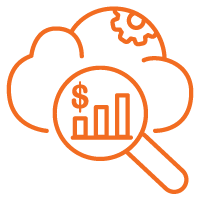
Benchmarking
Organizations should compare cloud optimization levels both internally between teams and externally with other organizations. This process helps to identify opportunities and drive decision making. Also, establishing a baseline of best FinOps practices and capabilities helps to uncover areas of improvement.

Stakeholder Interviews
It’s critical to align the cloud transformation activities with the overall objectives and business goals of the organization. We can enhance our FinOps assessment process by gathering insights from people who have skin in the game, key decision makers, or experts across IT, finance, and business units.

Data Analysis
In context of FinOps, this step is about reviewing cloud usage data, cost trends, and existing financial processes. There is a need for a real time reporting mechanism to show cloud spends, monitor usage and track savings. Data like level of untagged resources, budget overruns and utilization of commitment plan recommendations should be analyzed.
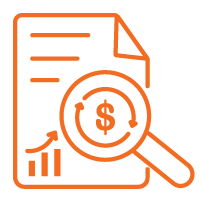
Capability Assessment – FinOps Maturity Scoring
Next, we move on to evaluate the organization's proficiency in various FinOps domains, such as cost allocation, forecasting, and optimization. The FinOps Maturity Assessment Report is a comprehensive finding which assesses all the levers of cost optimization around budget management and resource allocation. FinOps Maturity Scoring is the process of assigning scores to different FinOps capabilities based on predefined criteria and the findings in the FinOps assessment report.

Gap Analysis for Roadmap Development
Once organizations have a fair understanding of their current level of FinOps Maturity, the next and final step is to identify the gap/discrepancies between current practices and industry best practices followed by a thorough analysis of the assessment report to identify the areas for improvement. While creating a plan for improving FinOps maturity based on findings in the assessment ask yourself questions like – How can we optimize the cloud spending and forecast accurately? Are we having budget overruns and why? Are all the resources tagged and commitment plans recommendations implemented? Is governance and compliance in place? Are the teams in sync with each other and collaborating as required? By answering these basic questions, you can take appropriate measures to cut down costs and mitigate risks.
Unlocking Migration Velocity with Parallel Processing
There are three levels of FinOps maturity
-
Crawl: In this stage, the basic practices are established, and organization is aligned to follow the FinOps practices in cloud adoption. This is the nascent stage and there is a lot of scope for improvement.
-
Walk: In the walk stage, processes are defined and there are tools to automate the optimization. The organization is surely on track and has begun saving on cloud computing.
-
Run: In this stage, the organization starts to optimize the cloud spends with the best practices and tools in place.

Concierto MAXIMIZE is a FinOps solution designed to accelerate FinOps adoption and ensure efficient management of cloud costs. It is a cloud cost management and optimization platform which provides 360-degree visibility of cloud costs across resources in multi and hybrid cloud environments. Concierto MAXIMIZE has a specialized Executive Dashboard which can be used to assess the FinOps Maturity of the organization. It offers a comprehensive FinOps maturity Assessment Report and calculates the FinOps score of the organization. It also tells you which FinOps Maturity Level the organization currently falls into. It not only tells you the score and level but also provides a detailed description of the current state of FinOps Maturity KPIs which are used to calculate the final score.
KPIs that determine the FinOps Maturity of an Organization
FinOps Maturity can be measured by assessing the cloud optimization metrics. Let us look at essential FinOps metrics or the KPI of the FinOps Assessment.
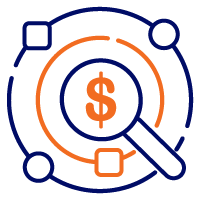
Tagged Resources
Cost Allocation helps to enhance financial accountability, transparency and optimization. We should know the percentage of cloud resources properly tagged for cost allocation and tracking. Tagged resources enable the implementation of chargeback and showback models. Here we can check the percentage of resources tagged vs untagged and consequently the accuracy of allocated costs.
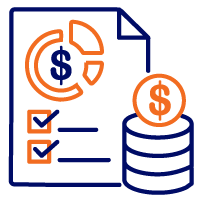
Budget Utilization
Strategic Budgeting goes a long way in making informed decisions. Its imperative to not only set budgets but also monitor the overruns based on thresholds. Variances in the budget must be closely captured. Here we can track the percentage of cloud budgets met or exceeded across the organization.
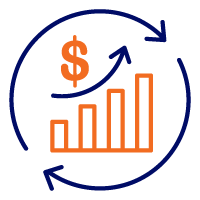
Savings in Optimization
At the end of the day, it all boils down to the quantified savings from FinOps initiatives and cost recommendations. Although savings can happen at any level of FinOps maturity level but usually it’s the ‘Walk’ and ‘Run’ stage when the cost savings start to kick in.
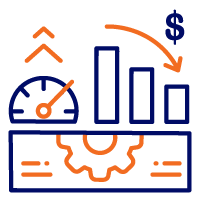
Resource utilization
Workload optimization ensures that the resources are highly utilized to reduce waste and cost. Here we can track the percentage of resources that have been right-sized or optimized for cost-efficiency. It also measures the percentage of instances that are underutilized or unused.
FinOps maturity assessment is a critical process for organizations looking to optimize their cloud spending and achieve greater financial efficiency. By regularly assessing FinOps maturity, organizations can continuously improve their cloud cost management practices and achieve greater business value from their cloud investments. Concierto MAXIMIZE empowers the organizations to grow in their FinOps journey and enhance the ROI in cloud spends. By leveraging the capabilities of Concierto MAXIMIZE organizations can navigate the complexities of cloud economics effectively and drive sustainable growth in the digital age.

